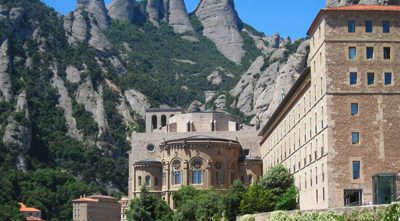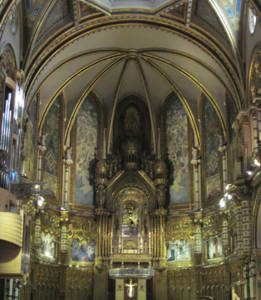Written by: Duane Osheim (Professor of History)
 We traveled to the Shrine of the Black Madonna of Montserrat, about 30 miles west of Barcelona. Montserrat is the second-most important religious shrine in all Spain and easily the most important cultural and religious center in Catalunya (or Catalonia as usually written in Spanish). In my courses we are spending a great deal of time studying cultural and religious identity and how these identities are influenced by the many cultures of the Mediterranean. And in this Montserrat is a wonderful example.
We traveled to the Shrine of the Black Madonna of Montserrat, about 30 miles west of Barcelona. Montserrat is the second-most important religious shrine in all Spain and easily the most important cultural and religious center in Catalunya (or Catalonia as usually written in Spanish). In my courses we are spending a great deal of time studying cultural and religious identity and how these identities are influenced by the many cultures of the Mediterranean. And in this Montserrat is a wonderful example. 
Montserrat means the “serrated mountain” and the jagged peaks surrounding the shrine do look like a saw blade. The shrine was established in the ninth century when shepherds discovered a statue of the Virgin and Child, which had been hidden earlier to protect it from invading Arabs. Since that time a church and monastery housing 80 monks have been built on the site and over a million people visit Montserrat each year. They come because of the shrine and also because of the spectacular walks through the dramatic mountain peaks surrounding the site. But they also come because the monks of Montserrat have been historically the most consistent defenders of Catalunyan language and culture. Even when speaking and publishing in Catalan were prohibited by Spanish authorities, the monks continued to operate a publishing house that published in Catalan. As our guide said, “all Catalans, no matter their religious beliefs, celebrate the beauty and cultural importance of Montserrat.”



